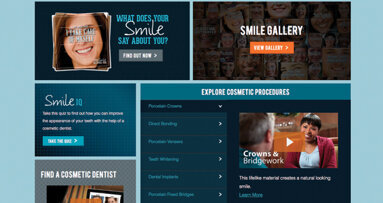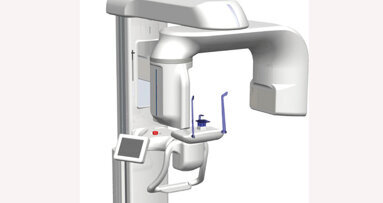According to Pew Internet, 45 percent of American adults owned a smartphone as of December 2012.[1] As these powerful devices increasingly make their way into the pockets and purses of your existing and potential patients, it’s a business imperative that your website deliver the experience these users expect. A strong mobile presence helps you get in front of prospective patients at the moment they’re looking for your business, and capture their attention once you have it.
On the other hand, if your site doesn’t look good or function properly on a smartphone, it won’t take long for patients to move on to one that does.
Not sure if mobile is important to your practice? Here are three reasons you could be missing the boat — and missing easy opportunities to attract new patients to your practice.
Mobile is where your patients are
Many of your patients probably use the mobile Web; if they don’t, it’s likely just a matter of time until they do. 87 percent of smartphone users access the internet using their phones,[2] and U.S. smartphone users spend an average of 23 billion minutes a month on the mobile Web.[3] Mobile Web usage has exploded over the past few years and shows no signs of slowing: it’s currently the fastest-growing source of internet traffic,[4] and many industry experts project that mobile internet usage will exceed desktop internet usage by 2014.[5]
For many smartphone users, mobile has also become their preferred way to use the Web: 31 percent of current mobile Web users mostly go online using their phones.[6] A sesame Communications research case study found that a mobile website drove an average of 19 calls per month to the practice.[7]
With so many of your patients “going mobile” these days, it’s important to make sure they can quickly and easily access your site on their devices.
Mobile is how patients research — and make — buying decisions
More and more people are using the mobile Web to research and buy goods and services. In 2011 more than $106 billion in online purchases were made on mobile devices, and this number is expected to grow at least 42 percent every year through 2015.[8]
Even people who don’t buy anything on their mobile devices often use them to research future purchases. 92 percent of smartphone users seek local information on their device, and 89 percent have taken action after looking up local content.[9] More significantly for your practice, 52 percent of smartphone owners have used their phones to search for health information.[10]
Without a mobile-optimized site, your practice will have a harder time driving new and repeat appointments from the mobile Web. Mobile shoppers are more likely to buy something if the company’s site is optimized for mobile, and are more likely to return to a site in the future if their mobile experience is good.[11]
You may be driving away patients
Many mobile users now expect any brand they engage with to have a mobile-optimized site. Nearly half of smartphone users say that visiting a non-mobile-friendly site makes them feel like the company doesn't care about them.[12] Additionally, more than half of mobile users say they won't recommend a business with a poorly designed mobile site.[13]
If smartphone users reach a site and see that it’s not optimized for mobile, what will they do? They might leave — 74 percent of mobile users are only willing to wait five seconds or less for a single Web page to load before leaving the site.[14] Or worse, they might visit a competitors’ site – 61 percent of customers who visit a website that isn't mobile-friendly will leave to visit a competitor.[15]
The bottom line is that not having a mobile-optimized site can hurt your relationships with current patients, and drive away prospective ones. As smartphone and mobile Web usage continues to grow, this will only become a bigger issue for dental practices without mobile-optimized sites.
The mobile Web is where many of your patients are, and where they go to find and research your dental practice. Optimizing your website for mobile will help you best capitalize on the mobile Web as a tool for building and strengthening relationships with patients. In selecting a partner to launch your mobile site, make certain they understand on-the-go patient online behavior and leverage your existing online practice brand and social media channels to optimize the impact of your new mobile site.
Note: This article was published in Dental Tribune U.S. Edition, Vol. 8 No. 4, April 2013 issue. A complete list of references is available from the publisher.
As of January 2014, 58 percent of adults Americans owned a smartphone.[1] With the continued advancements in cellular networks and expanded device ...
Today’s prospective patients are using their smartphones, laptops and tablets to search for and check out practices like yours. To turn these site ...
Did you know that 60 percent of social-media users are on mobile devices? What happens when one of them tries to contact you, but your site is unusable on ...
The clock is ticking. In 2025, your website is your front desk, your waiting room and your first impression. If your site is more than four years old — ...
NEW YORK, N.Y., USA: The American Academy of Cosmetic Dentistry (AACD), the world’s largest non-profit membership association dedicated to the art and...
My Orthodontist mobile app is the latest addition to Dolphin’s line of mobile products. It is also Dolphin’s first product designed for the ...
For decades, dentists around the world have profited from high demand for dental clinics by selling to a dental support organisation (DSO), entering ...
In today’s rapidly changing health-care environment, 3-D imaging is becoming an essential tool for diagnosis and treatment in dental and specialty ...
In a recent survey conducted by www.match.com, more than 5,000 American single adults, both male and female, were asked how they judge members of the ...
Researchers have found that flossing before brushing may be the ideal sequence for the most thorough removal of dental plaque. The report is featured in the...
Live webinar
Wed. 14 January 2026
12:00 PM EST (New York)
Dr. Théo Laplane, Dr. Robert Gottlander DDS
Live webinar
Fri. 16 January 2026
12:00 PM EST (New York)
Live webinar
Mon. 19 January 2026
1:00 PM EST (New York)
Philipp Kopp, Michael Seeber
Live webinar
Thu. 22 January 2026
9:00 AM EST (New York)
Prof. Judith Jones D.D.S; M.P.H., Prof. Kakuhiro Fukai D.D.S., Ph.D, Dr. Bathsheba (Bethy) Turton
Live webinar
Thu. 22 January 2026
2:00 PM EST (New York)
Dr. Nicola M. Grande DDS, PhD
Live webinar
Wed. 28 January 2026
8:00 AM EST (New York)
Live webinar
Wed. 28 January 2026
11:00 AM EST (New York)
Prof. Dr. Jan-Frederik Güth



 Austria / Österreich
Austria / Österreich
 Bosnia and Herzegovina / Босна и Херцеговина
Bosnia and Herzegovina / Босна и Херцеговина
 Bulgaria / България
Bulgaria / България
 Croatia / Hrvatska
Croatia / Hrvatska
 Czech Republic & Slovakia / Česká republika & Slovensko
Czech Republic & Slovakia / Česká republika & Slovensko
 France / France
France / France
 Germany / Deutschland
Germany / Deutschland
 Greece / ΕΛΛΑΔΑ
Greece / ΕΛΛΑΔΑ
 Hungary / Hungary
Hungary / Hungary
 Italy / Italia
Italy / Italia
 Netherlands / Nederland
Netherlands / Nederland
 Nordic / Nordic
Nordic / Nordic
 Poland / Polska
Poland / Polska
 Portugal / Portugal
Portugal / Portugal
 Romania & Moldova / România & Moldova
Romania & Moldova / România & Moldova
 Slovenia / Slovenija
Slovenia / Slovenija
 Serbia & Montenegro / Србија и Црна Гора
Serbia & Montenegro / Србија и Црна Гора
 Spain / España
Spain / España
 Switzerland / Schweiz
Switzerland / Schweiz
 Turkey / Türkiye
Turkey / Türkiye
 UK & Ireland / UK & Ireland
UK & Ireland / UK & Ireland
 International / International
International / International
 Brazil / Brasil
Brazil / Brasil
 Canada / Canada
Canada / Canada
 Latin America / Latinoamérica
Latin America / Latinoamérica
 China / 中国
China / 中国
 India / भारत गणराज्य
India / भारत गणराज्य
 Pakistan / Pākistān
Pakistan / Pākistān
 Vietnam / Việt Nam
Vietnam / Việt Nam
 ASEAN / ASEAN
ASEAN / ASEAN
 Israel / מְדִינַת יִשְׂרָאֵל
Israel / מְדִינַת יִשְׂרָאֵל
 Algeria, Morocco & Tunisia / الجزائر والمغرب وتونس
Algeria, Morocco & Tunisia / الجزائر والمغرب وتونس
 Middle East / Middle East
Middle East / Middle East





























































To post a reply please login or register